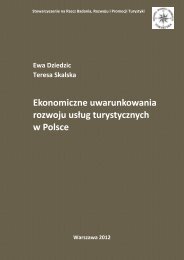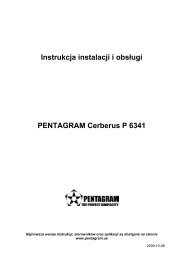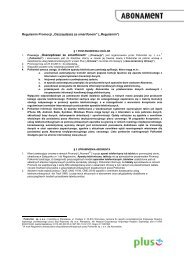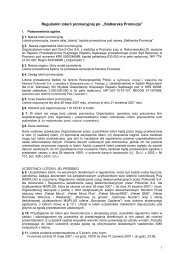Korytarz ekologiczny doliny Odry pdf
Korytarz ekologiczny doliny Odry pdf
Korytarz ekologiczny doliny Odry pdf
You also want an ePaper? Increase the reach of your titles
YUMPU automatically turns print PDFs into web optimized ePapers that Google loves.
Summary<br />
place in two ways. In the first case, individuals of a certain species gradually, generation<br />
after generation, occupy neighbouring areas or sites, thus moving slowly along the corridor.<br />
In the second case, the corridor serves only for „rapid” migration of individuals either<br />
because it is an unsuitable habitat for the breeding of a given species, or because all sites<br />
appropriate for this purpose have already been occupied.<br />
The best ecological corridors, those of linear character, stretching over tens or even hundreds<br />
of kilometres were created by rivers and their valleys, therefore their progressing fragmentation<br />
raises an understandable concern. Some stretches of certain rivers and their valleys<br />
have remained relatively unchanged, close by resembling their natural character and<br />
having high ecological value. Tracts of the largest Polish rivers: the Vistula and the Oder<br />
have such value. The state of the Vistula is far more natural state, while in the case of the<br />
Oder river valley ecosystems have been better preserved, as large patches of riverside carrs<br />
were preserved during regulation works. Therefore our opinion is that everything should be<br />
done to maintain the still existing areas of high natural value in the Oder valley and begin<br />
the restoration of the ecological values of its degraded parts. This would enable the establishment<br />
of a better-defined ecological corridor (stretching from the northern to the southern<br />
end of Poland), being one of the two main axes of ESOCH, an Ecological System of Protected<br />
Areas whose creation in Poland is now under way. Thanks to its location near<br />
Poland’s western border it will also constitute an important element of EECONET (European<br />
Ecological Network).<br />
Physiographic description of the Oder valley<br />
The part of the Oder valley which lies on Polish territory, is characterised by a significant<br />
landscape differentiation resulting from the intersection of many different physiographic<br />
units, which, in their turn, have a different geological structure, surface features and age. The<br />
age differentiation of the stretches of the Oder valley is significant: the upper stretch from<br />
the state border to the Œcinawa Depression was finally created after the continental glacier<br />
created during the Oder glaciation period had withdrawn, about 300-280 thousand years ago,<br />
while the reach between Siekierki and the mouth of Szczecin Bay is only 13-15,000 years<br />
old.<br />
Water resources and pollution of the Oder catchment area<br />
The Oder catchment area covers 118 861 sq km (of which 10.8 per cent lies outside Polish<br />
borders) and can be divided into three areas of distinct hydrographic characteristics: the<br />
basin of the Upper and Middle Oder extending over 53 536 sq km, including 9 235 sq km<br />
outside Polish borders; the basin of the Warta River, the main tributary of the Oder, covering<br />
54 529 sq km and the Lower Oder basin (10 796 sq km, of which 3 548 sq km lies on German<br />
territory).<br />
Intensification of human economic activity in the catchment basin of the Oder, expressed<br />
through the significant industrialization and urbanization of this area constitutes the main<br />
threat to the water quality in this region. This is particularly visible in the Upper and Middle<br />
Oder basin, where the most environmentally arduous industrial projects have been localized.<br />
This has its reflection in the water quality of the Oder. Waters of the lowest unclassified<br />
quality, are carried in the Upper and Middle Oder catchment area, while downstream<br />
205



![PENTAGRAM Cerberus [P 6367] Installation and Operation Manual](https://img.yumpu.com/49786948/1/184x260/pentagram-cerberus-p-6367-installation-and-operation-manual.jpg?quality=85)
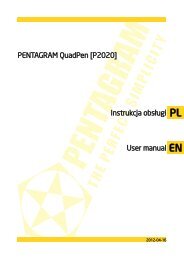
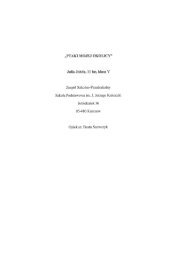
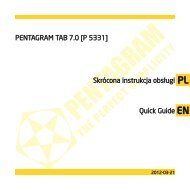
![PENTAGRAM Cerberus [P 6361] Quick Guide](https://img.yumpu.com/43449286/1/185x260/pentagram-cerberus-p-6361-quick-guide.jpg?quality=85)

